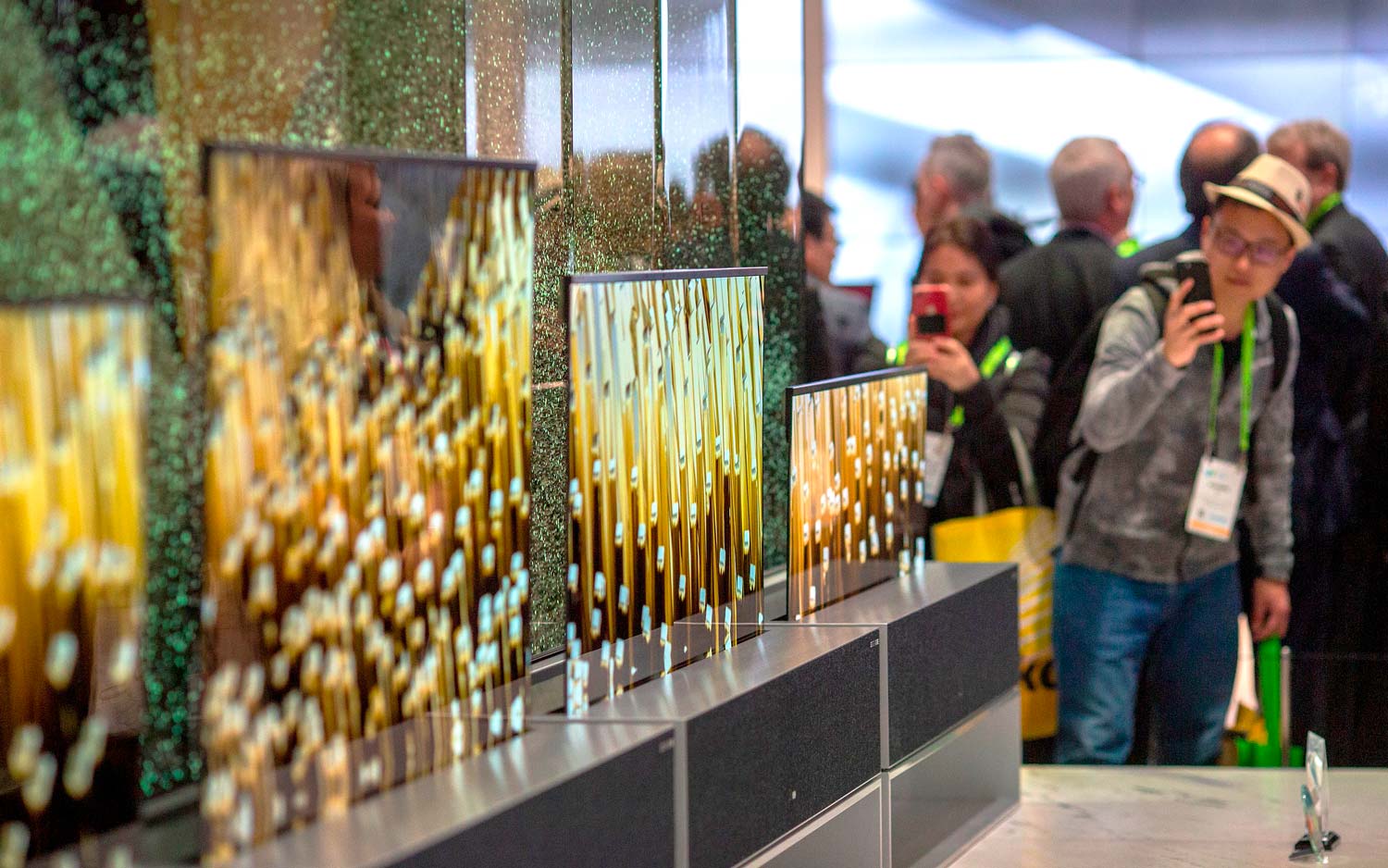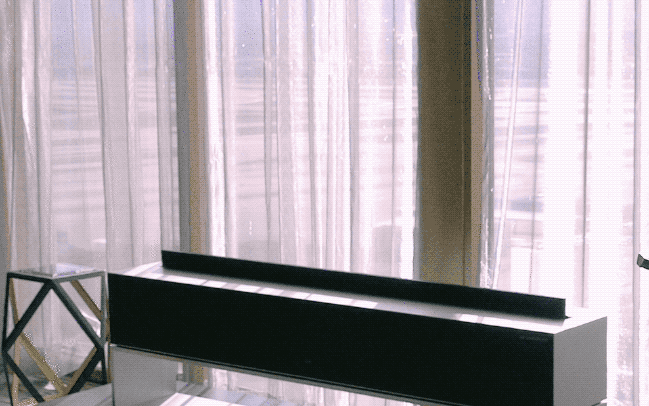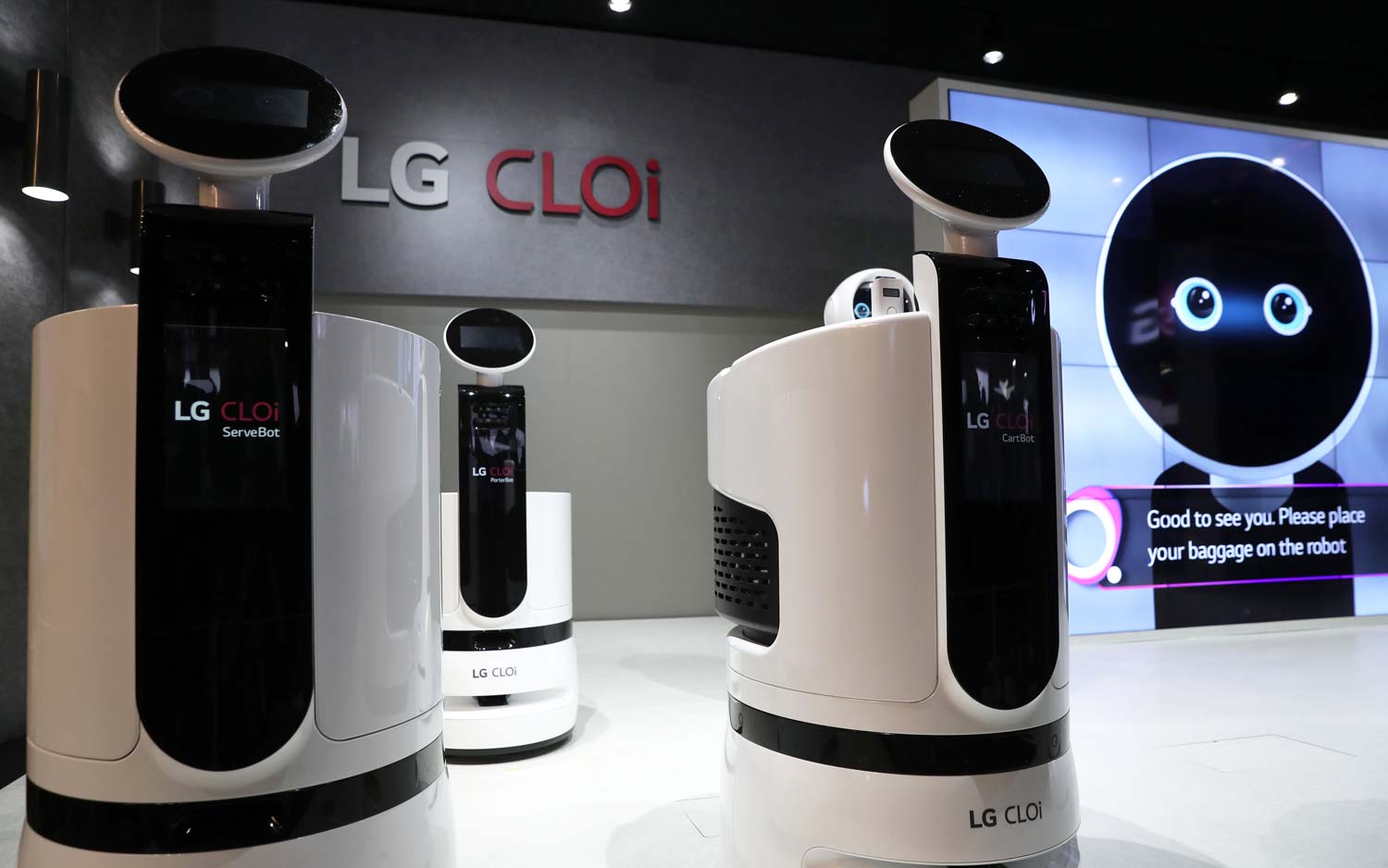LG CTO: We're Working on Rollable Phones
The president and CTO of LG Electronics sat down with Tom’s Guide to talk about everything from rollable TVs and phones to what's next for AI, 5G and robots.
One of the biggest trends of CES 2019 was to bash CES. "Iterative." "Underwhelming." "Nothing revolutionary." Those were just some of the things I heard from people who attended the world's biggest tech event this past week.
But if you ask IP Park, CTO and president of LG Electronics, about a gadget malaise, he'll point to his partner during his CES keynote as evidence that the tech world is not only not standing still, it's accelerating.
"I think if you were at CES 10 years ago, 15 years ago...who would have imagined a robot would co-host a CES keynote," Park said. LG also happened to unveil the most talked-about "wow" product at the show, the world's first rollable OLED TV.
I sat down with Park to discuss a wide range of subjects, and these are the highlights of our chat:
- LG is working on both rollable and foldable phones. Park isn't yet sure about market demand, but the company will be ready.
- While Samsung is banking on MicroLED displays, Park says it will take "many years" for microLED TVs to compete with OLED.
- 8K TVs are going to take over sooner than you think: "Once your eyes get used to high-resolution displays, you don't want to go back," Park said.
- The robot invasion is real. LG's service robots are so popular that the company can't keep up with demand.
- 5G has the potential to inspire a wave of smartphone upgrades: "I think this year could be the year of an upgrade in the smartphone industry because of 5G."
What do you think it is about the rollable OLED TV R that's has really captured the imagination of so many people?
You've never seen anything like this before, right? This is a very new form factor. We think that it has a very compelling use case. If you have a beautiful home, you don't want to cover one part of it with just a TV.

So the idea is that you can get rid of it when you don't want to see the huge screen when nothing's turned on, but just use it as a TV when you need it.
Without giving away any secrets, how were you able to pull this off?
First of all, having the OLED panel is the biggest factor because it's so thin, it doesn't require a backlight. That's the uniqueness of OLED TVs. It's a few millimeters thick, and you can make it into a much more flexible form factor, including rolling. Of course, we did more than just a regular OLED TV to make sure it can be rolled and unrolled many, many times throughout the lifetime of the TV, and it doesn't break.

One of the other big trends at CES was 8K TVs. Do you feel like this is the year that it starts to take off, or is it going to take some time?
I think both. There's no 8K content yet. Also, in order to support 8K, the whole broadcasting or content industry has to upgrade, right? The infrastructure and content and everything else. However, that doesn't mean you cannot enjoy 8K. We can utilize AI technology to upgrade the quality from 4K to 8K. Once your eyes get used to high-resolution displays, you don't want to go back.
How else is LG leveraging AI in TVs? And why are you supporting both Alexa and Google Assistant?
I think one point to acknowledge going forward is how AI can help you use TV better than how regular TV was before. You can use the TV screen to bring multiple content from different sources, and that creates complexity. We think that having AI to help you watch what you want, when you want it, will be critical.
Likewise, interacting with TV, voice is going to make it much simpler. The reason why we have multiple voice assistants in the TV is to make sure that we provide the best service to the customer. If you're stuck with just one proprietary voice agent, you're stuck with a very limited amount of service, and that's not fair for the customer.
MORE: Best Smart TVs 2019 - The Best 4K and HD Televisions for the Money
Samsung is touting its microLED technology for TVs. How do you think it compares to OLED?
I don't think you can compare between OLED and microLED at this point. OLED is here in production, and super-good quality. MicroLED is not mature yet, as to compete with OLED. It's going to take more years in terms of the resolution, in terms of the product maturity. OLED is already here. It's superthin, it's got really nice colors.

We are also doing development, R&D in microLED. We showcased that in September at IFA. MicroLED itself is a good potential technology, but it's not mature yet.
Are you looking into rollable and foldable phones as well?
We are exploring many different form factors for phones, including foldable and rollable. Because display technology has grown so much that it can make it into very flexible form factors. And with 5G, if the market requires much bigger screens, we'll need to fold it or roll it. So we'll explore.
A lot of people are saying the whole smartphone market has stagnated and there are even some who argue that LG should exit the business altogether. What's your reaction to that?
The smartphone business is very tough because of the competition. Also because of the penetration. Everyone has a phone now, right? Everybody has a big screen, and everybody has many features that others have. I think this year could be the year of the upgrade in the smartphone industry because of 5G.
5G is going to be available this year, and people will come out with 5G phones. And 5G is different from LTE, not only because of bandwidth, but also latency. You may want to have even bigger screens on 5G phones because of the more content you can get. That could trigger different killer applications that you run on phones.
MORE: All the Incoming Foldable Phones for 2019
Robots are starting to evolve to the point where consumers are getting more comfortable with the concept of having robots in their home. Do you feel like robots are at a tipping point?
We have robots in five different categories. [The] first one is service robots in public areas. For example, if you come into the airport in Korea, we have 14 robots there in full service. These robots will help you with anything. It speaks four languages; it's got many different sensors, camera, light and ultrasonic sensors; it's very smart in navigating, so it doesn't bump into people, but goes really quickly to a target location. You can ask it to guide you to Burger King and it will escort you there.

If you're at the baggage claim, it will just come to you and you can ask for help. It's almost like somebody approaching you. You don't have to try to look for an information desk anymore.
How long do you think it will be before robots like that are used in the U.S.?
We have a lot more demand than what we can produce right now. So as soon as we launch, we get calls from every airport out there. Maybe sometime soon we can see them here, but it really depends on the priority. These robots can be deployed in other big public areas like shopping malls, banks, hotels and others. And the variants of these can carry stuff: luggage, food and drinks. In fact, during my keynote, I had a robot deliver beer.
MORE: Beer Me! LG Launching Home Brew Kit at CES
You're using ThinQ branding on everything from TVs to phones and even refrigerators. What is the easiest way to define ThinQ for consumers?
When I talk about ThinQ, I talk about three different aspects of ThinQ. It's called Evolve, Connect and Open. Evolve means that in whatever product you have ThinQ, the product will evolve over time by learning from you, learning about the environment, learning about the situation. So the more you use our products, the more it knows about you. It adapts to you, rather than you having to learn about our device. So basically, the value of the product will go up as you use it more.

The second one is what I call Connect. What it means is that LG makes a diverse portfolio of products. Home, on the road, in the office, in public spaces, even robots. And we want the AI experience to be seamless across all devices. Let's say you have 10 different devices and each has its own AI working differently, you cannot use this. We want seamless AI experiences across all products that we make.
The third one is Open. It means that we want to provide the best service to our customer, whether the solution service comes from LG or from one of our partners.
What's a good example of how an LG ThinQ product evolves and gets better as it gets used?
Our air conditioners will evolve based on their usage pattern, how many people are where and all that, so it'll optimize its efficiency to use less and less energy. So it knows when you're at home; it knows when you're not home. It knows when more people are at one location than the other. So it'll get more and more efficient.
MORE: How to set up ThinQ AI on your LG TV
With our robot vacuum cleaner, if you let it run a few days in your home, it will optimize itself so it can concentrate on where you have more traffic. It can avoid obstacles based on whether it thinks it's running into a piece of furniture, or people, or dogs. So it gets smarter.
What are some of the other big trends that you've seen at CES 2019 that are going to continue throughout the rest of this year?
The automotive industry is changing. It's no longer just OEMs making a new model and announcing it. It's all about autonomous driving. And what happens when you have an autonomous car? The inside of a car is another huge opportunity area for companies like LG, because we have so many different technologies and products for you to use as entertainment and productivity at home. All of those can be directly transferred into a cabin space inside a car — because you don't need to drive at all, right? — as autonomous driving technology matures.
Some say this year's CES was more of an iterative year, that there was nothing revolutionary. Do you agree with that? And where do you feel like technology needs to go to get people more excited?
I think if you were at CES 10 years ago, 15 years ago, I think the change was much more incremental. Everything was about TV. You could see nothing else but TV. Each year would be just increasing the screen size — from 42-inch, to 50-inch, whatever. There was nothing else. But recently, it's been all about automotive, it's been all about AI, smart home, etc. I think we are moving much faster than before. And you're going to see more interesting things coming up. Who would have imagined a robot would co-host a CES keynote, right?
Sign up to get the BEST of Tom's Guide direct to your inbox.
Get instant access to breaking news, the hottest reviews, great deals and helpful tips.
Mark Spoonauer is the global editor in chief of Tom's Guide and has covered technology for over 20 years. In addition to overseeing the direction of Tom's Guide, Mark specializes in covering all things mobile, having reviewed dozens of smartphones and other gadgets. He has spoken at key industry events and appears regularly on TV to discuss the latest trends, including Cheddar, Fox Business and other outlets. Mark was previously editor in chief of Laptop Mag, and his work has appeared in Wired, Popular Science and Inc. Follow him on Twitter at @mspoonauer.

